THE GREAT WAR 1914-1918
THE AMERICAN EXPEDITIONARY FORCES
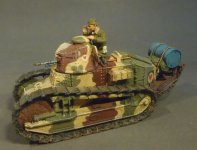
GWUS-07A
THE GREAT WAR,1914-1918
THE AMERICAN EXPEDITIONARY FORCES,
TANK COMMANDER,
(1pc)
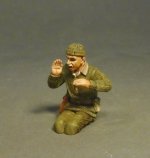
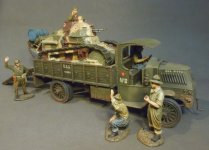
WHEELS ACROSS THE DESERT
In 1915, Egypt was the centre of the war effort in the near East. Units would strike westwards into the Sahara desert to deal with dissident tribes who were goaded into action by the Turks, or were sent northwards into Gaza to confront the Turkish army itself.
The Sennussi were a warlike Arab religious sect encouraged by the Turks to tie down as many British troops as possible. Model T Ford cars, escorted by Rolls- Royce armoured cars were used to patrol the desert, and to launch daring raids against the Sennussi.
The most important British armoured car of the first World War was undoubtedly the Rolls-Royce. In terms of the numbers built, effective design and all round quality it was unequalled, and is now taken to typify the vintage armoured car.
The Hedjaz Armoured Car Section, was an unit of three Rolls Royce armoured cars, which operated alongside the irregular forces inspired and guided by T.E Lawrence. This unit also acted independently and mounted long range raids, such as the succesful raid against the Amman railway bridge in September 1918.
The armoured cars earned Lawrence’s respect for their reliability and effectiveness, and in his “Seven Pillars of Wisdom” he mentions that “a Rolls in the desert was above rubies”.
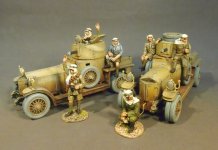
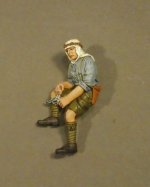
WAD-02B
WHEELS ACROSS THE DESERT,
THE HEDJAZ ARMOURED CAR SECTION,
ROLLS ROYCE ARMOURED CAR,
Armoured Car Crew,
(1pc)
**PLEASE NOTE A THIRD ROLLS ROYCE ARMOURED CAR IS IN DEVELOPMENT, AND HOPEFULLY WILL BE AVAILABLE IN 2017**
More to follow..................................................
THE AMERICAN EXPEDITIONARY FORCES

GWUS-07A
THE GREAT WAR,1914-1918
THE AMERICAN EXPEDITIONARY FORCES,
TANK COMMANDER,
(1pc)


WHEELS ACROSS THE DESERT
In 1915, Egypt was the centre of the war effort in the near East. Units would strike westwards into the Sahara desert to deal with dissident tribes who were goaded into action by the Turks, or were sent northwards into Gaza to confront the Turkish army itself.
The Sennussi were a warlike Arab religious sect encouraged by the Turks to tie down as many British troops as possible. Model T Ford cars, escorted by Rolls- Royce armoured cars were used to patrol the desert, and to launch daring raids against the Sennussi.
The most important British armoured car of the first World War was undoubtedly the Rolls-Royce. In terms of the numbers built, effective design and all round quality it was unequalled, and is now taken to typify the vintage armoured car.
The Hedjaz Armoured Car Section, was an unit of three Rolls Royce armoured cars, which operated alongside the irregular forces inspired and guided by T.E Lawrence. This unit also acted independently and mounted long range raids, such as the succesful raid against the Amman railway bridge in September 1918.
The armoured cars earned Lawrence’s respect for their reliability and effectiveness, and in his “Seven Pillars of Wisdom” he mentions that “a Rolls in the desert was above rubies”.


WAD-02B
WHEELS ACROSS THE DESERT,
THE HEDJAZ ARMOURED CAR SECTION,
ROLLS ROYCE ARMOURED CAR,
Armoured Car Crew,
(1pc)
**PLEASE NOTE A THIRD ROLLS ROYCE ARMOURED CAR IS IN DEVELOPMENT, AND HOPEFULLY WILL BE AVAILABLE IN 2017**
More to follow..................................................


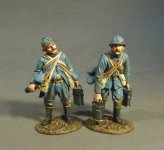
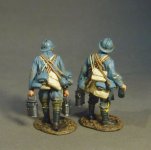
![GWF42[1].JPG](/data/attachments/161/161494-5b3b8a62e76ac9286c1dde0a1514ba37.jpg)